
Events
Solo Series Spring 2022
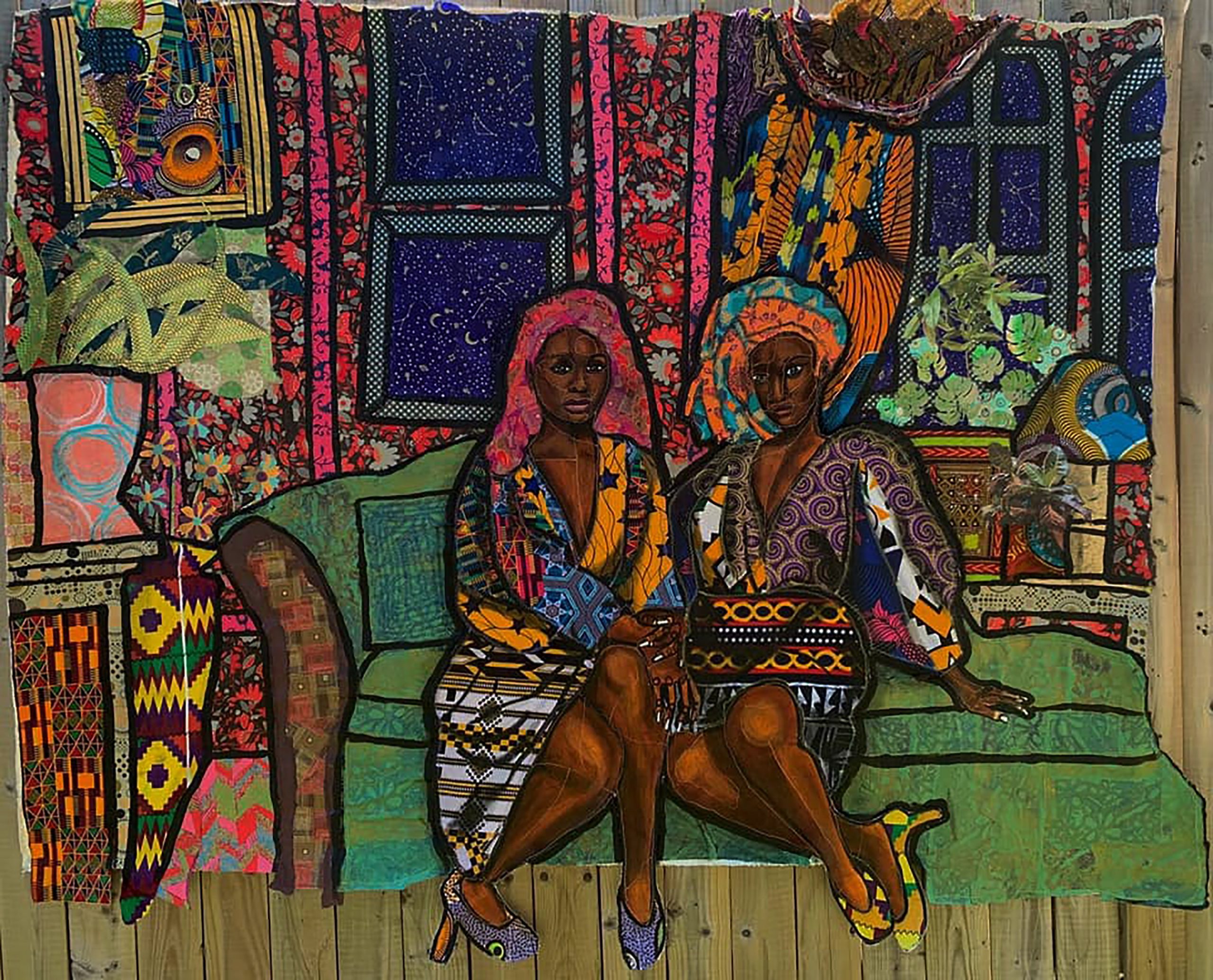
Event
Jazz, 2021 | Zsudayka Nzinga | Mixed Media on Canvas
On View April 21 – May 30, 2022
Opening Reception | Thursday, April 21 | 6:00p.m. – 8:00 p.m.
Coffee Break: Artist Talks | Saturday, April 23 | 10:00 a.m. – 12:00p.m.
Coffee Break: Artist Talks | Saturday, May 21 | 10:00 a.m. – 12:00p.m.
Featured Artists: Michael Radyk, William Timmins, Susan Smerker & Zsudayka Nzinga
ARTISTS
Michael Radyk, Sculpture
Kellner Gallery
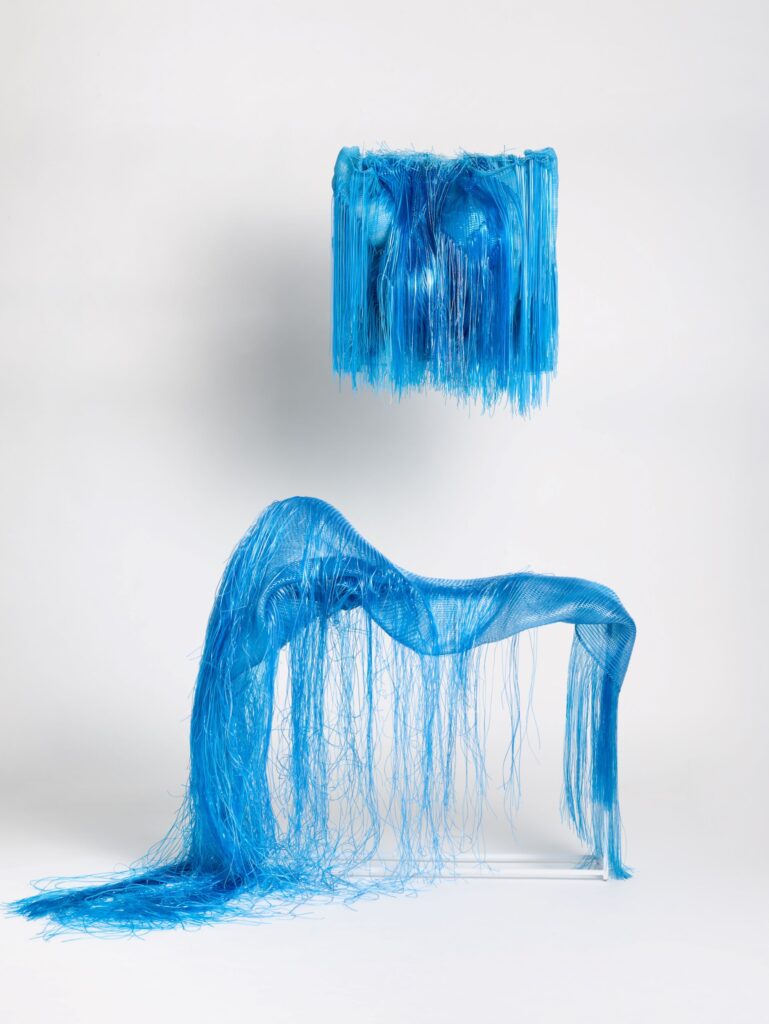
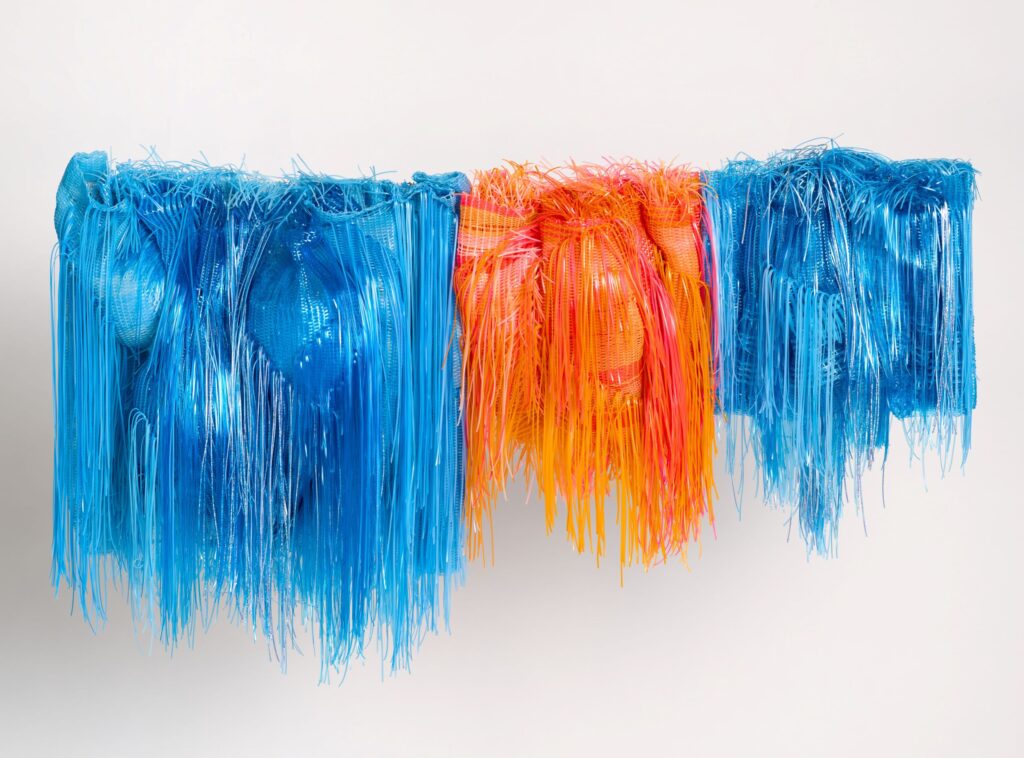
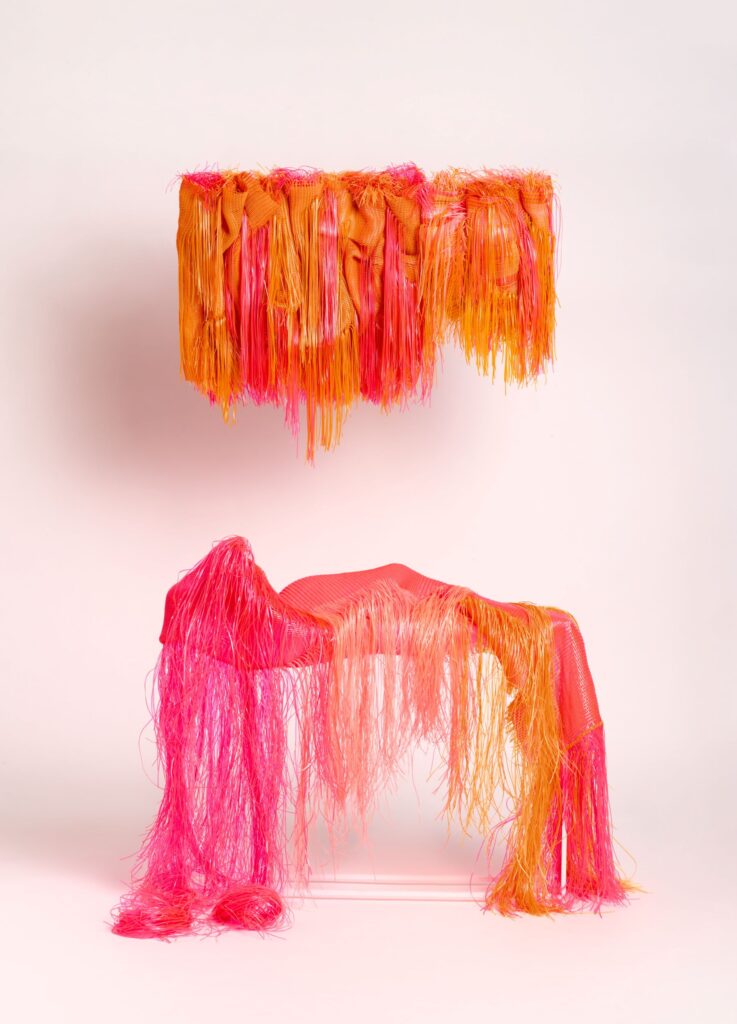
The making of woven cloth is at the core of Radyk’s artistic practice. He has been researching weft cut textiles including corduroy and fustian. Fustian is a fabric made by weaving two or more sets of wefts, or fillings into a textile. Theses weft floats are cut creating a plush and active surface. The word has come to denote a class of heavy cotton fabrics, some of which have pile surfaces, including moleskin, velveteen, and later renamed and rebranded as corduroy.
Radyk’s goal is to bring the artists hand and contemporary sensibility to the process of fustian cutting and weaving. He finds inspiration in repurposing and the reinvention of a variety of industrial and machine-made materials he can integrate into his work. The ubiquitous nature of the materials he uses are interesting to him because they usually defy desire: heavy cotton, re-purposed plastic tape and gimp, recycled polyester, industrial dyed feathers, retro-reflective safety tape, phosphorescent and holographic tapes.
William Timmins, Painting
Book Room Gallery
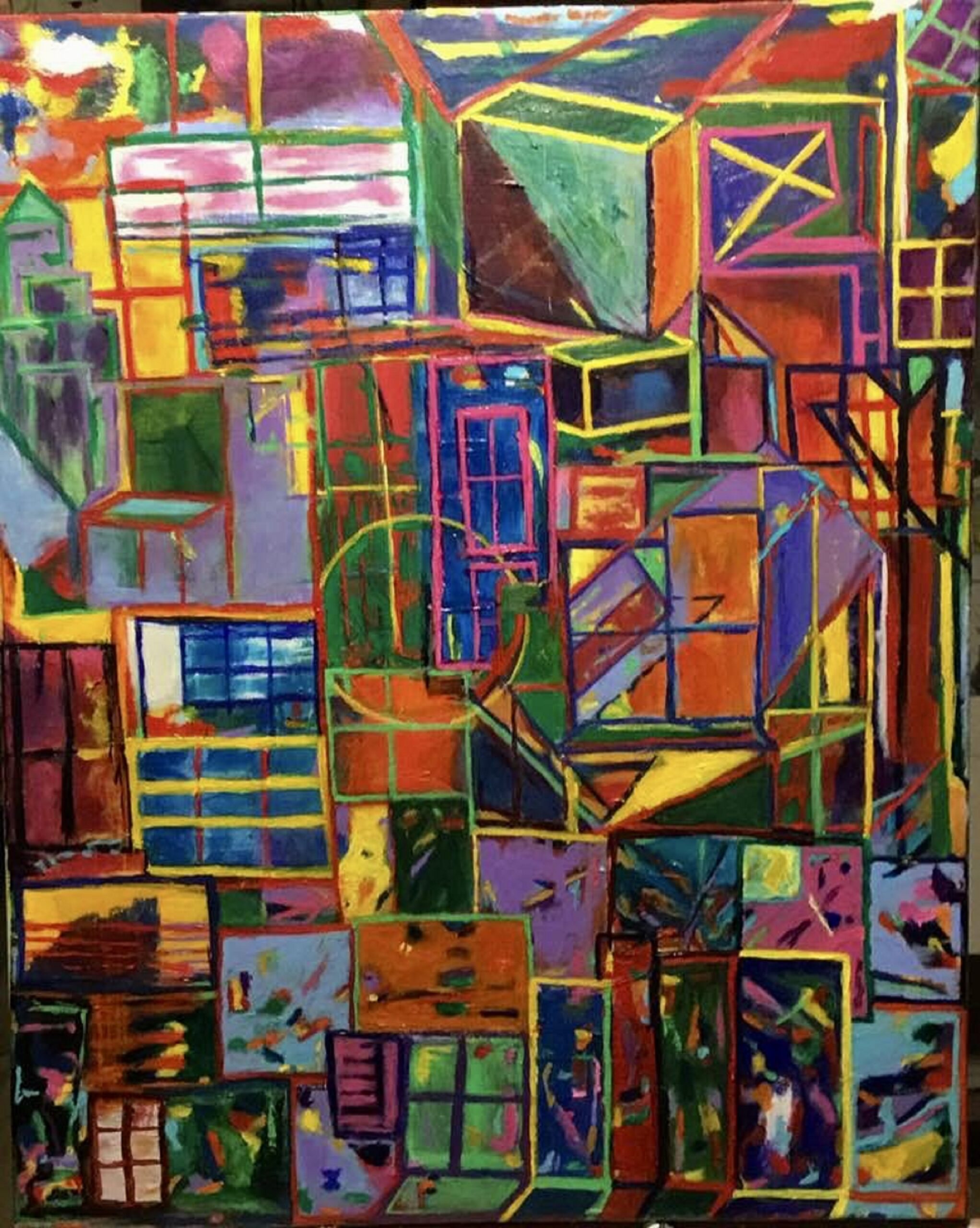
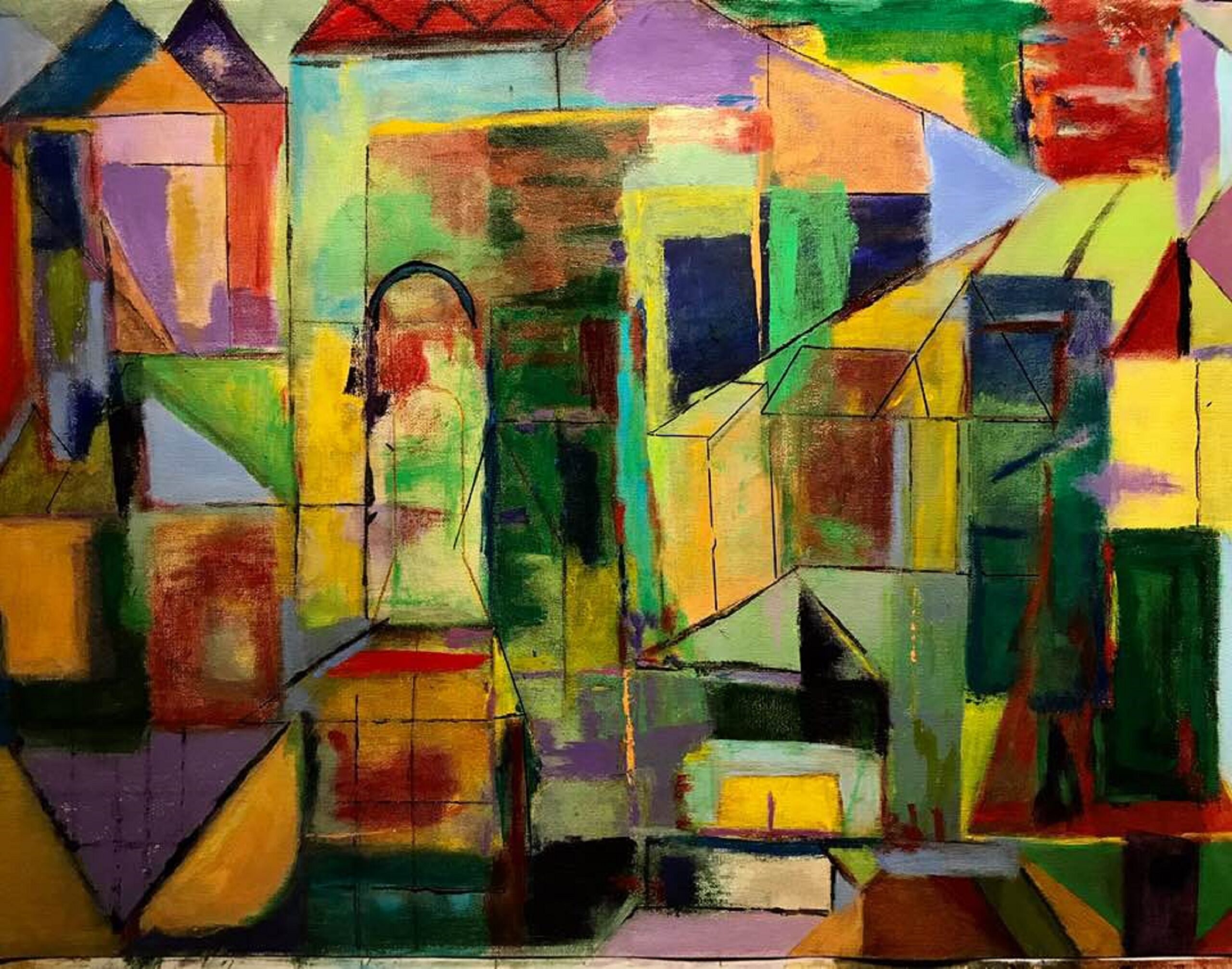
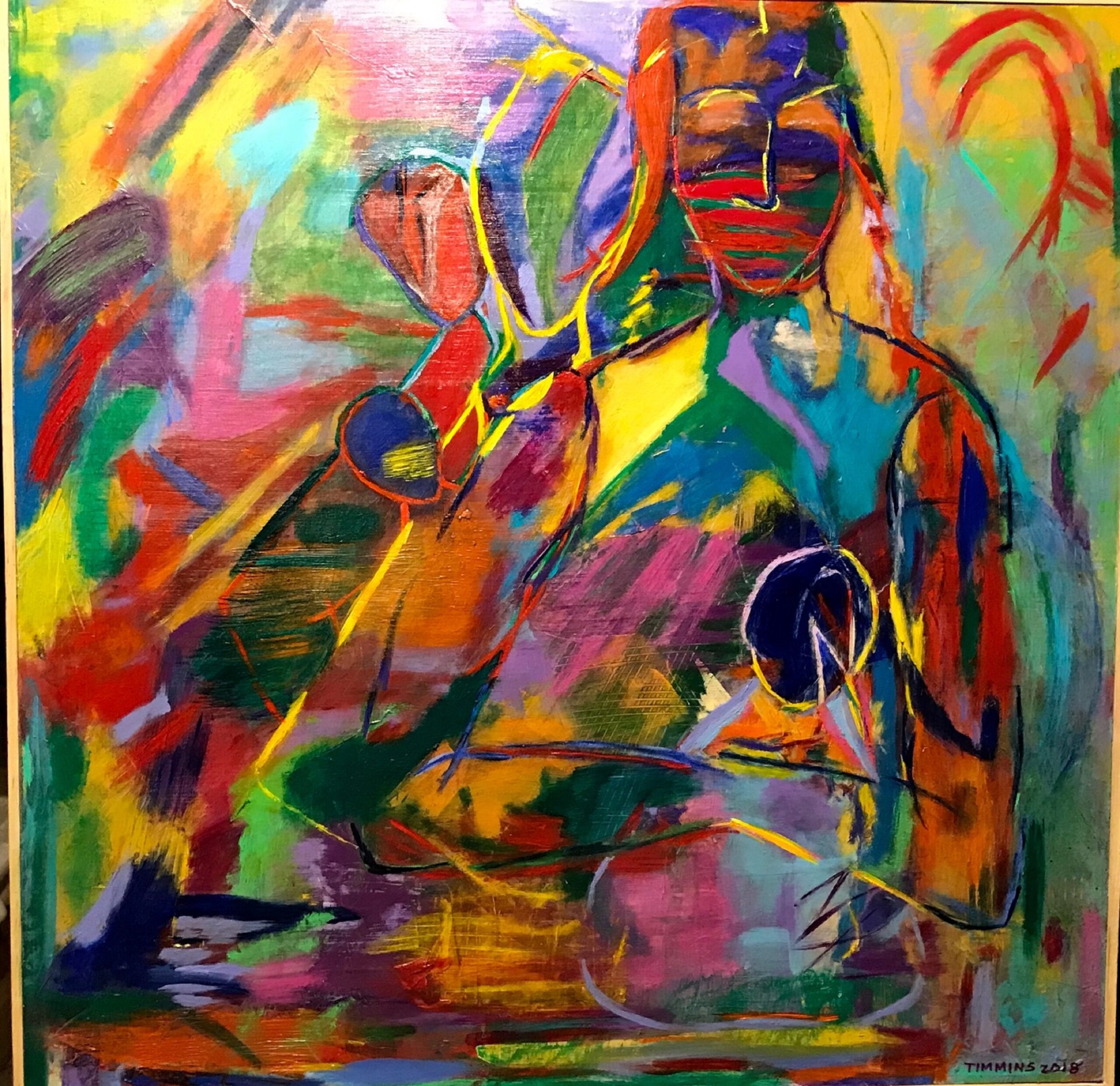
Timmin’s paintings are often derived from the internal thoughts, feelings and emotions evoked by beauty. Rather than convey this beauty in a conventional, representational form, he references music, dreams, memories, nature and artistic influences for inspiration, and attempts to convey the beauty and his joy in the abstract, via color, shape, texture, mark making and space. He leaves it to every individual to view and interpret the images through their own personal lens.
Susan Smerker, Painting
Tile Room Gallery
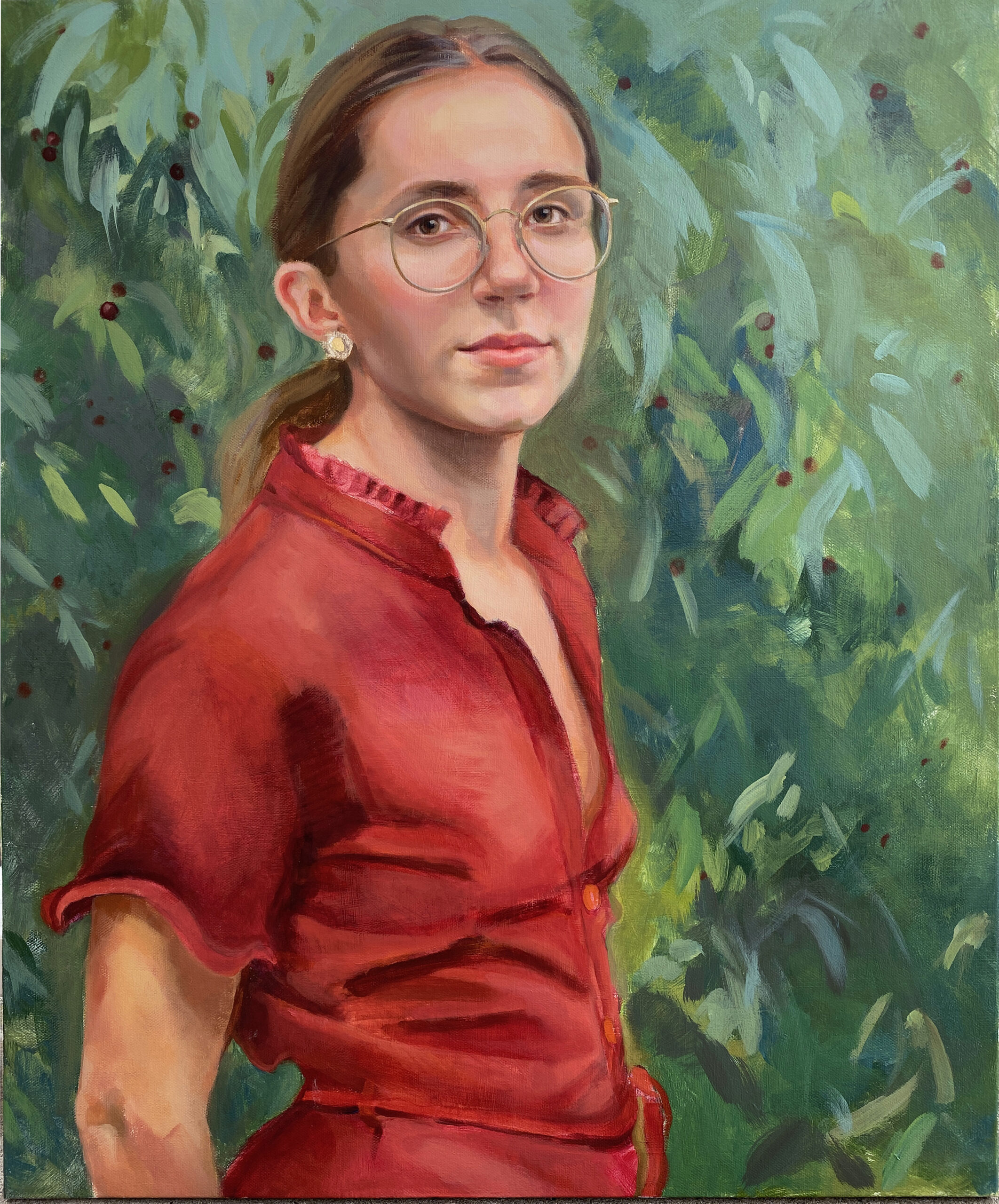

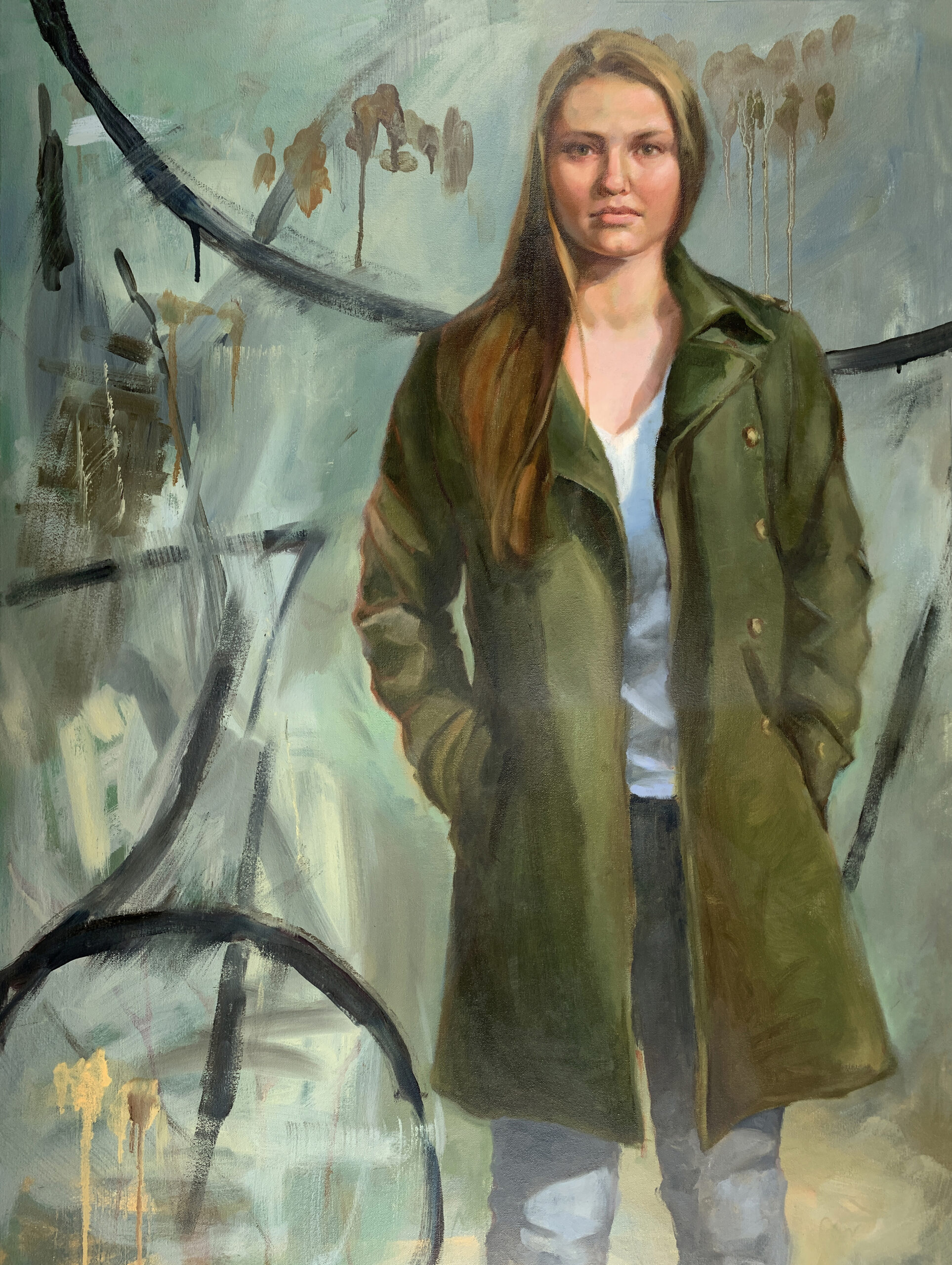
Smerker has always been drawn to the figure and portrait as subject matter. Working primarily in oils, she sets out to achieve a likeness or essence of her subject, whether it is a quick sketch or a more formal portrait.
Inspired by the people and personalities closest to her, she often use friends and family members as models, a tradition practiced by many painters. When Smerker has a model in front of her that she knows very well, it leaves her free to experiment with the paint. To her, there is nothing more satisfying and challenging than working from a live model and she exercises this skill as often as she can. She always enjoys learning and investigating ways to move forward with her craft. What keeps her engaged in the creative process is the challenge she encounters each time she conceives an idea and then attempts to bring it to life on the canvas.
Zsudayka Nzinga, Mixed Media
Community Arts Gallery

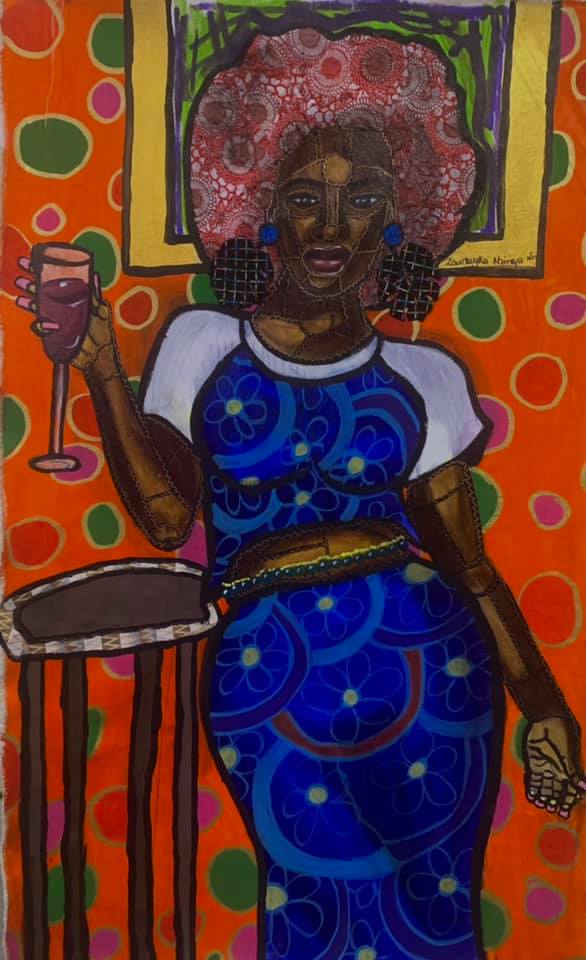
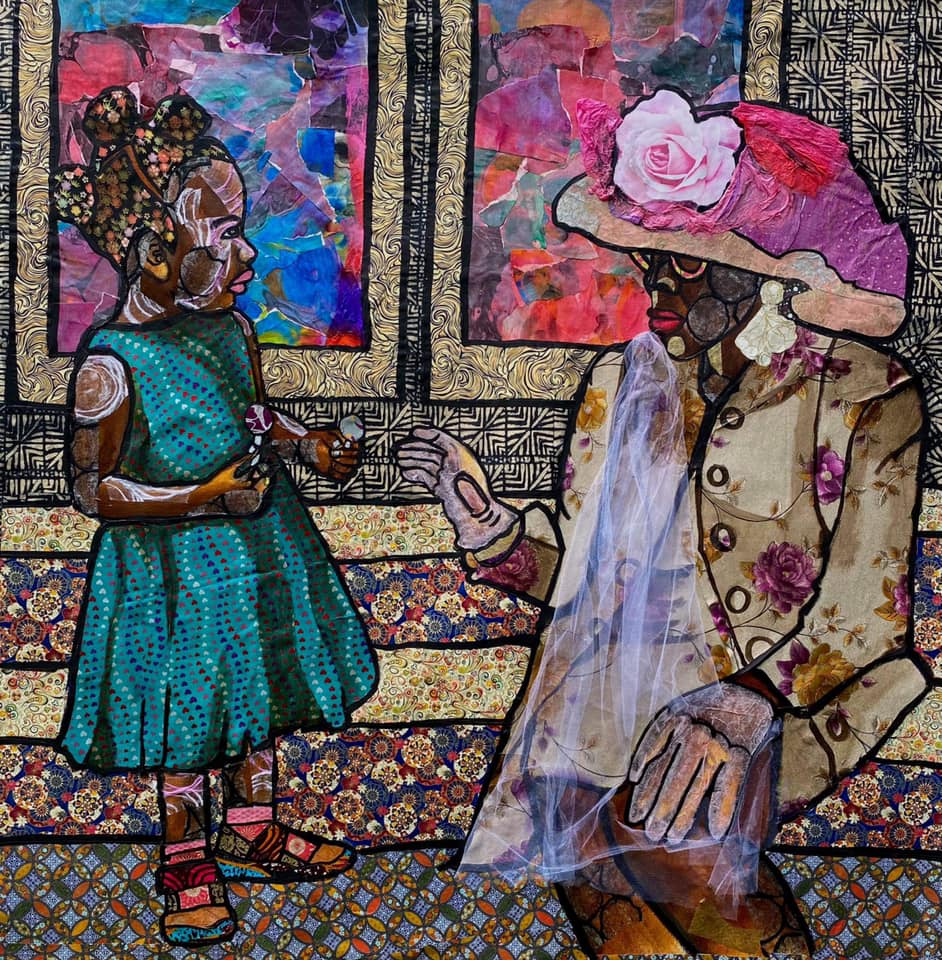
Nzinga is a multi disciplinary mixed media artist and designer. She considers her studio practice to be cultural anthropology in that she aims to capture and archive through her work the history and culture of Black Americans. She is very interested in what happens when Black American artist work and narratives are included alongside American art without requiring the Black artist to center their identity in trauma or politics and whether the sight and existence of Black faces is enough to make their work, voice and existence inherently political. Her works seek to normalize the day to day of Black Americans and celebrate culture while also highlighting moments shared by all humans.
“We all sit in the house, we all water our plants, we are all living an existence with more similarities than differences.” Nzinga says.
Nzinga work challenges viewers to include Black stories in American stories. Told through the lens of personal experience, she uses acrylic, decorative paper, hand dyed paper, linocut stamp, ink, vinyl, marker, metal, fabric and thread to create images of proud and beau.